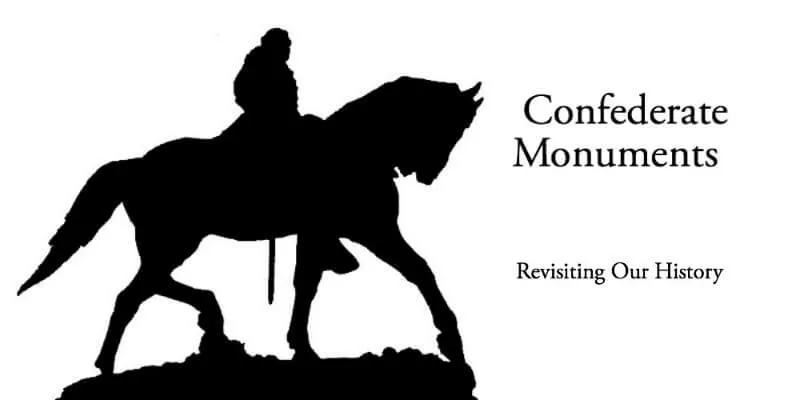Last fall, Art History Professor Kelley Helmstutler Di Dio made a proposal to the 18 students in her Honors College “Art and Its Destruction” class: how about turning their research on the Civil War monument controversy into a full-length book?
“Art and Its Destruction” examines complex issues surrounding the deliberate destruction and dismantling of art, and why art is used as a tool of war and protest. As debates about the fate of Civil War monuments made headlines in the summer of 2017, Helmstutler Di Dio saw a rare opportunity to align current events with the course’s content.
“We’d just read a collection of essays on the destruction of Saddam Hussein’s monuments during Desert Storm and I thought ‘This class is really full of exceptional students and great writers who are capable of producing something like this.’”
The catch? It was October, already the mid-point of the semester, when Helmstutler Di Dio sprang the idea. Less than two months remained to complete the project. Nonetheless, the group’s reaction was a resounding “let’s do this!”
“The idea of publishing a book was really appealing,” said anthropology major Erin Varnum ’20. “Having this tangible outcome and being able to say I contributed to it is something I didn’t expect when I signed up for the course.”
Students divvied up assignments, writing chapters on the history of Confederate Civil War monuments in seven cities across the U.S., and reporting on how each city was responding to calls for their removal. Student teams worked on acquiring rights to images, editing, design, and using Createspace, an online self-publishing tool. The UVM Honors College pitched in with funds to support publishing costs. The resulting volume Confederate Monuments: Revisiting Our History is now available on Amazon.
“It was an incredibly democratic undertaking,” observed Helmstutler Di Dio, “and in the process they learned about all the labor involved in getting something published. They were extremely driven to come up with a product they’d be really proud of.”
The New Orleans chapter tells the story of a statue of Confederate President Jefferson Davis dedicated in 1911 in a white only ceremony. The monument was ordered removed by the New Orleans City Council in 2015 and was finally taken down last May.
“We learned that a lot of the statues were not built immediately after the Civil War but during the 1900s – some of them during the Jim Crow era,” said Varnum. “Certainly, there was a political intention behind that, a statement against integration and equality.”
A native of Virginia, Helmstutler Di Dio grew up with the narrative that the Confederacy fought an honorable struggle in defense of state sovereignty while minimizing the role of slavery, a perspective she began to question as her education progressed.
“I wanted to respect the fact that students in the class could bring very different views about the monuments and what they represent,” she said. “As an art historian, I don’t believe it’s my job to impart personal views about what should happen to these monuments. Our job here is to honestly record the history of the statues, report on what different sides are saying about them and discuss what possible solutions there are moving forward.”
In the final chapters of the book, students present arguments to keep the statues in place, to remove them, and possible solutions to keep the monuments available for viewing, if not in public urban centers.
An essay contributed by Bridget Higdon ‘20 considers possible destinations for Civil War statues, an inquiry that leads to a fundamental question—do Confederate monuments qualify as art? Higdon points out that many of the monuments developed after the turn of the century were mass-produced and not museum quality. On the other hand, a few examples, like the Richmond, Virginia statue of Robert E. Lee created by French sculptor Jeanne Antoine Merci, are considered by some art historians to contain real aesthetic value.
Higdon’s personal conclusion is that context is crucial. “Many of these pieces would be out of place in an art museum, but may be relevant for a historical society or Civil War museum. I don’t think we’d want to show these monuments in ways that idolize the prejudiced values of the time.”
In photo, row one from left: Joscie Norris, Erin Varnum, Professor Kelley Helmstutler-Di Dio, Michael Chan; row two: Skylar Bouffard, Megan Cummins, Emma Roach; row three: Cali Murray, Zoe Kalbag, Bridget Higdon, Kate Bamberger; row four: Kyle McLaughlin, Sarah Boller, Sean Quigley, Lily Canavan; row five: Maddie Bowe. Not pictured: Emily Connolly, Ally Merril, Nicky Paulson.
